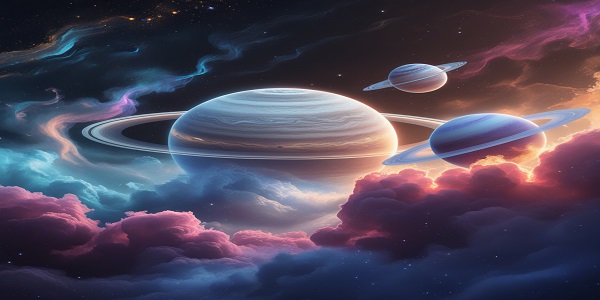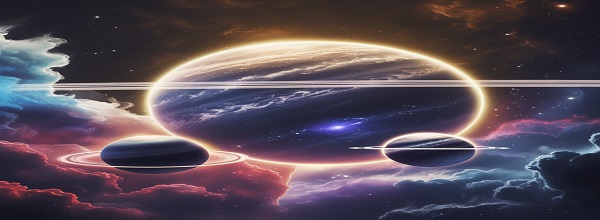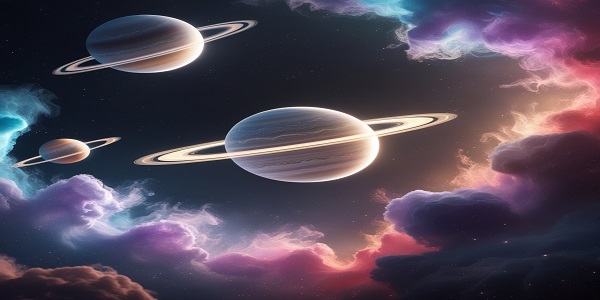Newborn Gas Giants
Newborn Gas Giants: In a groundbreaking discovery, NASA’s James Webb Space Telescope (JWST) has captured the formation of massive gas giants in real-time, offering unprecedented insights into how planets are born. These observations provide a rare glimpse into the chaotic and dynamic processes that shape planetary systems, including our own solar system.
For decades, astronomers have theorized about how gas giants like Jupiter and Saturn form, but direct evidence has been elusive—until now. Thanks to JWST’s cutting-edge infrared capabilities, scientists are witnessing planetary birth in stunning detail, revolutionizing our understanding of cosmic evolution.
The James Webb Space Telescope: A Window into Cosmic Birth
Since its launch, the JWST has revolutionized our understanding of the universe, and its latest observations of newborn gas giants are no exception. Unlike its predecessor, the Hubble Space Telescope, JWST specializes in infrared astronomy, allowing it to peer through dense cosmic dust and observe the heat signatures of forming planets.

Key Features of JWST:
- Infrared Sensitivity: Detects heat from young planets hidden in dust clouds.
- High-Resolution Imaging: Reveals fine details in protoplanetary disks.
- Spectroscopic Tools: Analyzes the chemical composition of forming worlds.
By combining these capabilities, JWST provides the clearest view yet of planetary nurseries, helping scientists decode the mysteries of planet formation.
What Are Gas Giants? Understanding Planetary Formation
Gas giants like Jupiter and Saturn dominate our solar system, but how do these colossal planets come into existence? Unlike rocky planets such as Earth, gas giants are primarily composed of hydrogen and helium, with dense cores surrounded by thick atmospheres.
How Do Gas Giants Form?
Two leading theories explain their formation:
- Core Accretion Model: Small solid particles clump together, growing massive enough to pull in surrounding gas.
- Disk Instability Model: Fragments of the protoplanetary disk collapse directly into planets under gravity.
JWST’s latest data supports aspects of both theories, showing that gas giants may form faster than previously thought—sometimes in just a few million years.
The Discovery: Webb’s Stunning Observations
Webb’s latest images reveal swirling disks of gas and dust around young stars, where gas giants are actively taking shape. One notable system, PDS 70, shows a Jupiter-like planet (PDS 70b) still gathering material from its surrounding disk.
Key Findings:
- Dust Composition: Silicates and ice grains are key building blocks.
- Temperature Variations: Hotter inner regions vs. cooler outer zones.
- Gravitational Signatures: Distortions in the disk indicate forming planets.
These observations confirm that gas giants form within the gaps of protoplanetary disks, reshaping theories about planetary evolution.

How Do Planets Form? The Birth of a Gas Giant?
Planetary formation is a complex, dynamic process, and Webb’s observations are helping scientists piece together the puzzle.
Stages of Gas Giant Formation:
- Dust Clumping: Microscopic particles stick together, forming pebbles.
- Planetesimal Growth: Pebbles merge into larger bodies (planetesimals).
- Runaway Accretion: A massive core attracts gas from the disk.
- Final Assembly: The planet clears its orbital path, stabilizing over millions of years.
JWST’s data suggests some gas giants may skip the slow growth phase, forming rapidly through disk instabilities.
The Role of Protoplanetary Disks in Planet Formation
Protoplanetary disks are the cosmic nurseries where planets are born, and Webb is giving us the clearest look yet. These disks, made of gas and dust, orbit young stars and provide the raw materials for planet formation.
Notable Systems Observed by JWST:
- HL Tauri: A young star with distinct rings where planets may be forming.
- TW Hydrae: A nearby system with a large gap likely carved by a newborn planet.
These findings help astronomers understand how planetary systems, including our own, came to be.
Challenges in Studying Newborn Planets
Despite JWST’s advanced technology, observing planets in their infancy is no easy feat. The glare from parent stars often drowns out the faint light of forming planets, making detection difficult.
How JWST Overcomes These Challenges:
- Coronagraphs: Block starlight to reveal orbiting planets.
- Infrared Imaging: Detects heat rather than visible light.
- Long Exposure Times: Collects more data for clearer images.
Future telescopes, like the Nancy Grace Roman Space Telescope, will further enhance our ability to study young planets.
Implications for Exoplanet Research and Astrobiology
Understanding how gas giants form doesn’t just satisfy curiosity—it has profound implications for finding habitable worlds.
Key Takeaways:
- Planetary Migration: Gas giants can influence the orbits of smaller planets.
- Habitable Zones: Their presence affects where Earth-like planets can form.
- Moons as Life Hosts: Worlds like Europa and Enceladus could harbor life.
By studying gas giants, we inch closer to answering the ultimate question: Are we alone in the universe?

What’s Next? Future Missions and Research
Webb’s findings are just the beginning—future missions will delve even deeper into the mysteries of planet formation.
Upcoming Missions:
- European Extremely Large Telescope (ELT): Will capture even sharper images of protoplanetary disks.
- LUVOIR: A proposed telescope designed to study exoplanet atmospheres.
JWST will continue observing young star systems, providing more data to refine planetary formation models.
Conclusion
The JWST’s observations of newborn gas giants mark a pivotal moment in astronomy, reshaping our understanding of planetary birth. From dusty disks to fully formed worlds, we are witnessing the cosmic processes that shape planetary systems—including our own.
As technology advances, future discoveries will unlock even more secrets of the universe, bringing us closer to answering humanity’s oldest questions about our place in the cosmos.
FAQs
1. How does JWST detect forming planets?
JWST uses its powerful infrared sensors to peer through dust clouds and detect heat signatures from young planets. Unlike visible light, infrared radiation penetrates obscuring material, revealing hidden cosmic phenomena.
2. Can we see gas giants forming in other solar systems?
Yes! JWST has observed several protoplanetary disks where gas giants are actively forming around distant stars. Systems like PDS 70 and HL Tauri provide direct evidence of planetary birth.
3. Could these newborn gas giants ever support life?
While gas giants themselves are unlikely to host life, their moons—like Jupiter’s Europa or Saturn’s Enceladus—could have subsurface oceans and the right conditions for microbial life.

